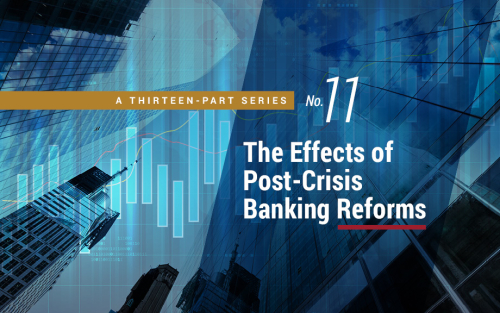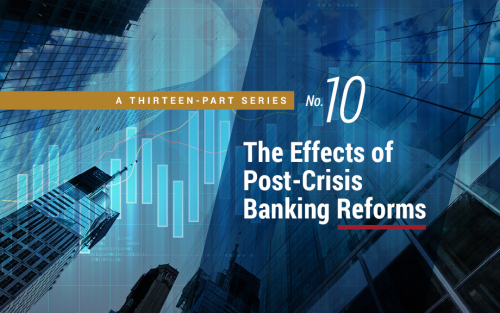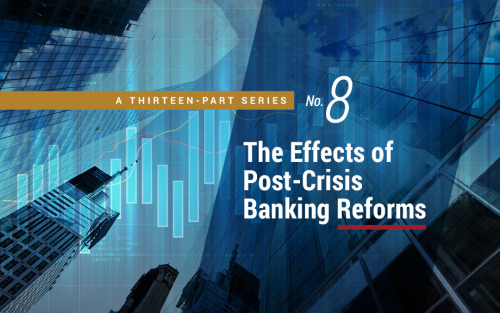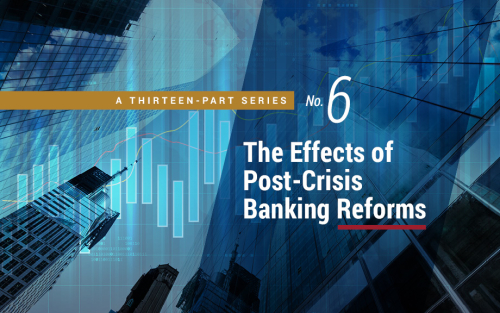Customer and Employee Losses in Lehman’s Bankruptcy

In our second post on the Lehman bankruptcy [link to recovery blog], we discussed the cost to Lehman’s creditors from having their funds tied up in bankruptcy proceedings. In this post, we focus on losses to Lehman’s customers and employees from the destruction of firm-specific assets that could not be deployed as productively with another firm. Our conclusions are based in part on what happened after bankruptcy—whether, for example, customer accounts moved to other firms or employees found jobs elsewhere. While these indirect costs are difficult to pin down, the analysis suggests that the most notable losses were borne by mutual funds that relied on Lehman’s specialized brokerage advice and firms that used Lehman for its equity underwriting services.
Lehman’s Bankruptcy Expenses

In bankruptcy, firms incur expenses for services provided by lawyers, accountants, and other professionals. Such expenses can be quite high, especially for complex resolutions. The direct costs of bankruptcy proceedings reduce a firm’s value below its fundamental level, thus constituting a “deadweight loss.” Bankruptcy also carries indirect costs, such as the loss in value of assets trapped in bankruptcy—a subject discussed in our previous post (link). In this post, we provide the first comprehensive estimates of the direct costs of resolving Lehman Brothers’ holding company (LBHI) and its affiliates under Chapter 11 bankruptcy, and of Lehman’s broker-dealer (LBI) under the Securities Investor Protection Act (SIPA).
How Much Value Was Destroyed by the Lehman Bankruptcy?

Lehman Brothers Holdings Inc. (LBHI) filed for Chapter 11 bankruptcy protection on September 15, 2008, initiating one of the largest and most complex bankruptcy proceedings in history. Recovery prospects for creditors, who submitted about $1.2 trillion of claims against the Lehman estate, were quite bleak. This week, we will publish a series of four posts that provide an assessment of the value lost to Lehman, its creditors, and other stakeholders now that the bankruptcy proceedings are winding down. Where appropriate, we also consider the liquidation of Lehman’s investment banking affiliate (which occurred on a separate track in the Securities Investor Protection Act (SIPA) proceedings).
“Skin in the Game,” Depositor Discipline, and Bank Risk Taking

In a previous post, we argued that double liability for bank owners might not limit their risk taking, despite the extra “skin in the game,” if it also weakens depositor discipline of banks. This post, drawing on our recent working paper, looks at the interplay of those opposing forces in the late 1920s when bank liability differed across states. We find that double liability may have reduced the outflow of deposits during the crisis, but wasn’t successful in mitigating bank risk during the boom.
Credit Market Choice

Credit default swaps (CDS) are frequently credited with being the cause of AIG’s collapse during the financial crisis. A Reuters article from September 2008, for example, notes “[w]hen you hear that the collapse of AIG […] might lead to a systemic collapse of the global financial system, the feared culprit is, largely, that once-obscure […] instrument known as a credit default swap.” Yet, despite the prominent role that CDS played during the financial crisis, little is known about how individual financial institutions utilize CDS contracts on individual companies. In a recent New York Fed staff report, we assess the choice banks face when trading the idiosyncratic credit risk of a firm, and argue that banks’ participation decisions have been affected in the post-regulation period, either by direct changes in market structure or by changes in the relative cost of pursuing different strategies.
Liquidity Effects of Post‑Crisis Regulatory Reform

The post-crisis regulatory reform efforts to improve capital and liquidity positions of regulated institutions provide incentives for banks to change not only the structure of their own balance sheets but also how they interact with their customers and other market participants more generally. A 2015 PwC study on global financial market liquidity, for example, noted that “[a]s banks respond to the new regulatory environment, they have sought to make more efficient use of capital and liquidity resources, by reducing the markets they serve and streamlining their operations.” In this blog post, we provide an overview of three recent New York Fed staff reports that study the impact that post-crisis regulation has had on the willingness and ability of regulated firms to participate in U.S. over-the-counter (OTC) markets.
Did Banks Subject to LCR Reduce Liquidity Creation?

Banks traditionally provide loans that are funded mostly by deposits and thereby create liquidity, which benefits the economy. However, since the loans are typically long-term and illiquid, whereas the deposits are short-term and liquid, this creation of liquidity entails risk for the bank because of the possibility that depositors may “run” (that is, withdraw their deposits on short notice). To mitigate this risk, regulators implemented the liquidity coverage ratio (LCR) following the financial crisis of 2007-08, mandating banks to hold a buffer of liquid assets. A side effect of the regulation, however, is a reduction in liquidity creation by banks subject to LCR, as we find in our recent paper.
Leverage Rule Arbitrage

Classic arbitrage involves the same asset selling at different prices; the leverage rule arbitrage we study here involves assets of different risk levels requiring the same amount of capital. The supplementary leverage ratio (SLR) rule, finalized by U.S. regulators in September 2014, requires a minimum ratio of capital to assets at the largest U.S. banks. The floor is higher for more systemically important banks, but not for banks with riskier assets. That non-risk-based aspect of SLR was intentional, since the leverage limit was meant to backstop (“supplement”) risk-based capital rules in case banks underestimate their asset risk and overstate their capital strength. As policymakers have noted and bankers have warned, if the leverage rule is the binding capital requirement, banks can “arbitrage” the rule by selling safer assets and replacing them with riskier, higher-yielding ones. The findings of our recent staff report are consistent with those concerns.
What Happens When Regulatory Capital Is Marked to Market?

Minimum equity capital requirements are a key part of bank regulation. But there is little agreement about the right way to measure regulatory capital. One of the key debates is the extent to which capital ratios should be based on current market values rather than historical “accrual” values of assets and liabilities. In a new research paper, we investigate the effects of a recent regulatory change that ties regulatory capital directly to the market value of the securities portfolio for some banks.
Analyzing the Effects of CFPB Oversight

The Consumer Financial Protection Bureau (CFPB), created in 2011, is a key element of post-crisis U.S. financial regulation, as well as the subject of intense debate. While some have praised the agency, citing the benefits of consumer financial protection, others argue that its activities involve high compliance costs, increase uncertainty and legal risk, and ultimately reduce the availability of financial services for consumers. We contribute to this debate by investigating empirically whether the CFPB’s supervisory and enforcement activities have significantly affected the supply of mortgage credit, or had other effects on bank risk-taking and profitability














 RSS Feed
RSS Feed Follow Liberty Street Economics
Follow Liberty Street Economics